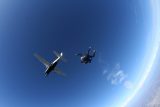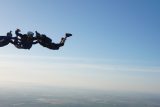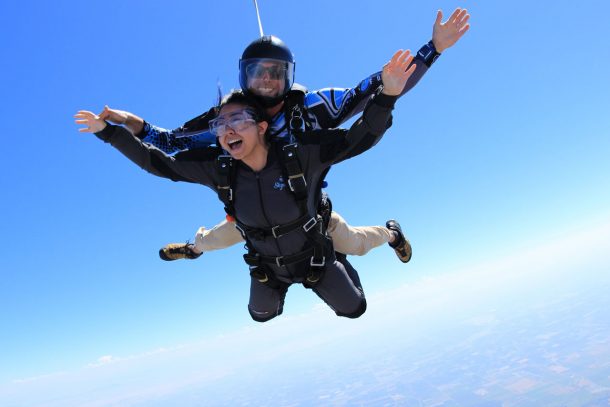How, precisely, is it possible to exit a plane nearly two miles above the earth and settle down nice and neat, smack dab in the middle of the landing area? How skydivers land can seem like sheer luck, but parachute steering and landing have been developed into an art over the last 60 years! How to land a parachute is no big secret—here’s what you need to know!
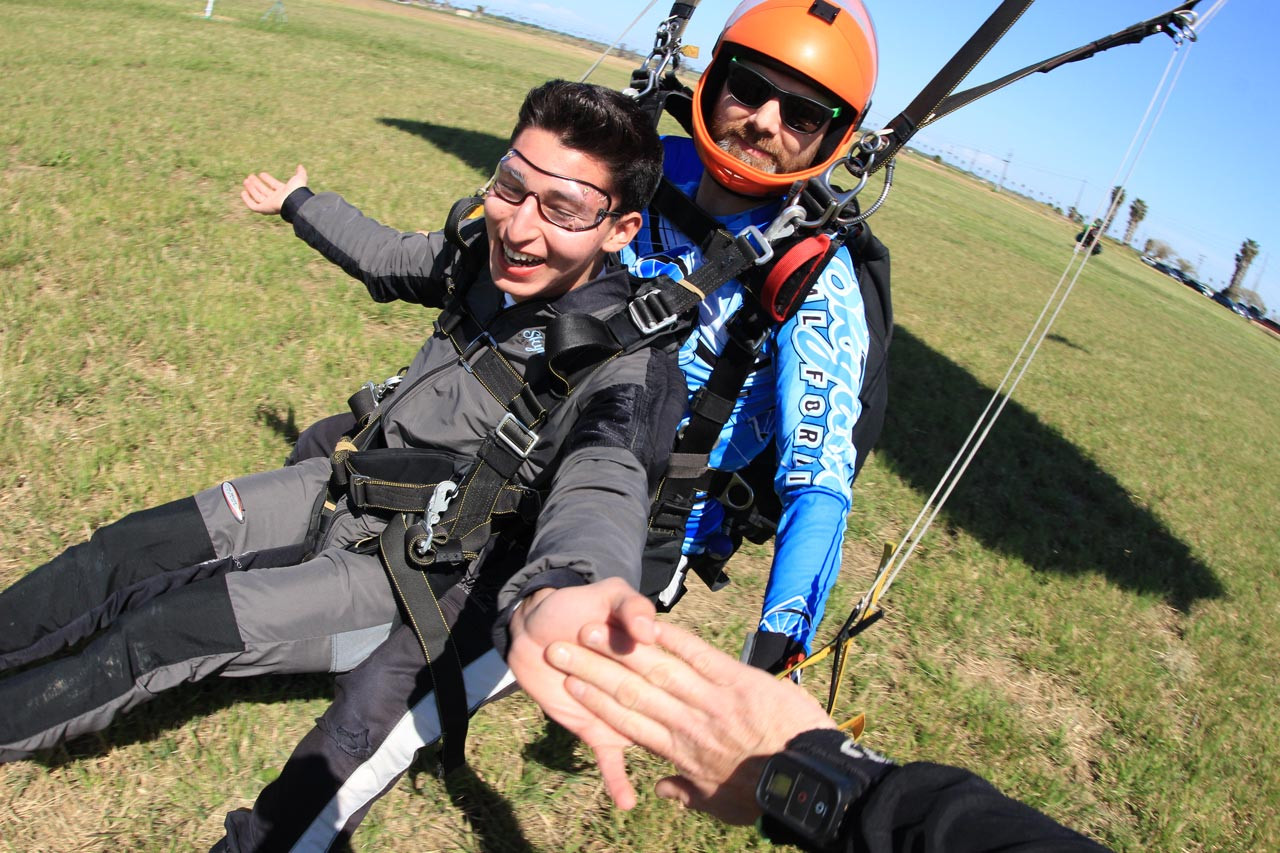
Training and Practice
Accurate parachute landing comes down to training and practice. As a student skydiver, from the very beginning of your training you will be taught the fundamentals of parachute steering and accurate landings. One of the pillars of this accuracy training is the landing pattern. Similar to the landing pattern used by aircraft, the parachute landing pattern consists of a downwind leg, a base (or crosswind) leg, and a final approach to the target. As you progress in your training, you will learn how different wind conditions affect the different legs of your landing pattern.
The training isn’t finished once you achieve that hallowed A-license. No, there’s still more to learn, and many skydivers complete post-license training in the form of canopy courses to learn to dial in and further develop their canopy piloting skills.
Naturally, the more you practice something, the better you become. In the case of professional accuracy jumpers and demonstration skydivers who land into football fields or other non-dropzone landing areas, these athletes have trained extensively over hundreds of skydives to hone their parachute steering skills. With regards to the former, these jumpers are so skilled they routinely land accurately on a target the size of a dime!
Advanced Parachutes
Part of the ability to steer our parachutes and land accurately can be attributed to the design of modern parachutes.
At skydiving’s inception, parachutes were much different than they are today. For one thing, the parachutes used in skydiving from the 50s to the mid-70s were round! Round parachutes were notoriously difficult to steer and would drift instead of really flying. This is because round parachutes only create drag whereas square RAM-air parachutes also create lift. Truly, it wasn’t until the advent of the square parachute that real parachute steering came onto the scene.
The shape of the square parachute makes it more like a wing. Air is forced into the front of each cell-like airfoil. This creates rigidity. For RAM-air parachutes, the leading edge is tilted slightly downward. As air is deflected toward the back of the wing, it creates forward momentum.
The parachute is controlled by using two steering lines each with a handle (we call them toggles) on the end. There is one steering toggle on the right and one on the left. When you pull on the right toggle, the back right of the parachute cups under, and the parachute turns to the right. When you pull on the left toggle, the back left side of the parachute cups under, and the parachute turns to the left. This allows you to direct the parachute to where you would like to land. When it is time to land, a jumper will pull down in a measured and equal manner on both toggles. This causes the entire backside of the parachute to cup under causing the parachute to flatten out reducing the rate of descent and forward movement.
The Green Light
Now, in truth, even the most advanced of canopy pilots cannot land accurately if the spot they exit the aircraft is too far away from the predetermined target. On any skydive, there is a specific exit point. We call this the spot. The spot is determined by calculating the freefall drift that will be caused by the winds at key altitudes. Before exiting the aircraft, the pilot will flip a switch illuminating a green light within the aircraft. When this light is lit, it means the pilot has reached the predetermined spot. Even with this indication, it is still the skydiver’s responsibility to look out and ensure two things: 1) that there are no other aircraft or clouds in their path below, and 2) that they have, in fact, reached the appropriate exit point above the ground.
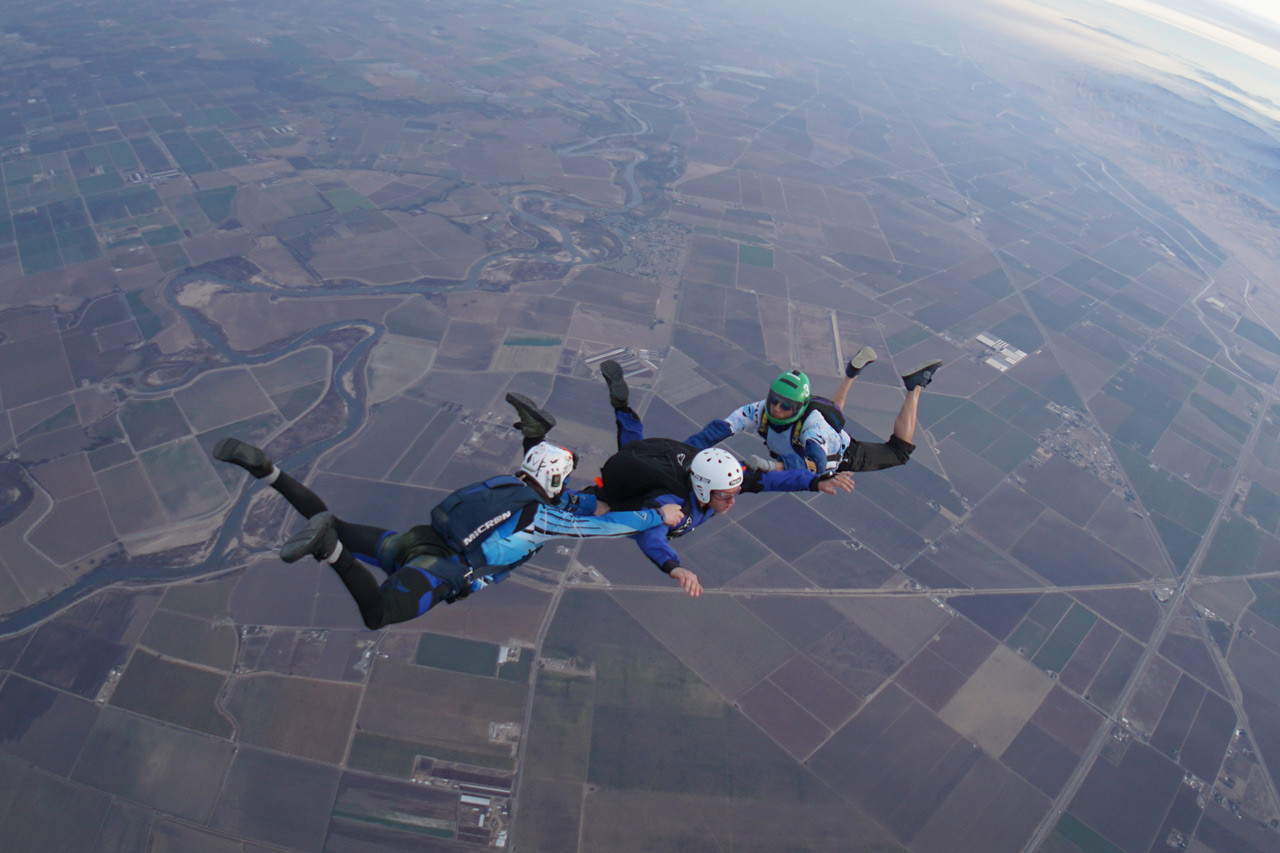
Landing Solo vs. Landing Tandem
The same landing principles are used by both tandem instructors and solo skydivers. The primary difference is the size of the parachute being used and the amount of force required to steer.
Tandem parachutes are often anywhere from 340 to 390 square feet – quite a bit larger than the 80 to 200 square foot parachutes utilized by licensed skydivers. Because of the size of the tandem parachute, it requires a greater amount of force from the tandem instructor to steer and, when it comes time to land, to flare.
Interested in learning to land a parachute first-hand? Check out our Accelerated Freefall Program!

